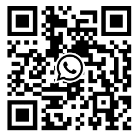· MQTT
· CoAP
· HTTP
· DDS
· LoRa
· ZigBee
· NB-IoT
· LwM2M
· TCP
· UDP
· Classified according to network four layer protocols
· There are many communication protocols for the Internet of Things. Below are some main communication protocols to briefly understand their definitions, advantages and disadvantages
MQTT is an abbreviation for Message Queuing Telemetry Transport, which is a lightweight publish subscribe message transport protocol. The MQTT protocol is lightweight, simple, open, and easy to implement, which makes it widely used. It can provide a reliable transmission protocol between the transport layer and the application layer, supporting point-to-point and one-to-many communication.
Advantage
· Low cost
· Adapt to low bandwidth and unstable networks
· Simple implementation
Shortcoming
· Does not support data storage and querying
Application examples
· Amazon IoT
CoAP is an abbreviation for Constrained Application Protocol, which is an application layer protocol designed specifically for the Internet of Things. It adopts a RESTful architecture, and the resource addresses on the server have a URL like format similar to the Internet. The client also has POST, GET, PUT, and DELETE methods to access the server. Suitable for low-power and low bandwidth devices. It can communicate through the UDP transmission protocol, supporting both reliable and unreliable transmission, while also having the characteristics of low overhead and high efficiency.
CoAP is in binary format, while HTTP is in text format, so CoAP is more compact than HTTP.
Advantage
· Low power consumption
· Low bandwidth
· Lightweight, CoAP has a minimum length of only 4B, while an HTTP header already has ten Bs
· Support reliable transmission, data retransmission, block transmission
· Supports IP multicast and can send requests to multiple devices simultaneously
Shortcoming
· Does not support data storage and querying
Application examples
·Philips Hue Smart Bulb
·Nest intelligent thermostat
HTTP is the abbreviation of HyperText Transfer Protocol, which is an application layer protocol based on a request response model, suitable for Internet and LAN environments. It can communicate through the TCP transmission protocol, supporting both reliable and unreliable transmission, and has the characteristics of wide application and easy implementation
Advantage
· WIDELY
· Easy to implement
·Support data storage and querying
Shortcoming
·High cost
· The server cannot proactively notify the client
· Cost
Application examples
· Apple HomKit
DDS is the abbreviation of Data Distribution Service, which is a real-time data transmission protocol suitable for distributed real-time systems. It can communicate through the TCP/UDP transmission protocol, supporting reliable and unreliable transmission, while possessing high reliability and real-time performance.
Advantage
· Real time data transmission
· High reliability
· Support data storage and querying
Shortcoming
· High cost
Application examples
· NASA Space Station
· Smart grid
LoRa is a long-distance low-power wireless network protocol suitable for the wide area Internet of Things. It can communicate through wireless channels, supporting reliable and unreliable transmission, while also possessing the characteristics of low power consumption and long-distance transmission.
Advantage
· Long distance (2-5km from town, 15km from suburbs)
· Low-power consumption
· Security (AES128 encryption)
Shortcoming
· Slow transmission speed
· Low transmission capacity
· No internet access
Application examples
· Smart city
· Intelligent agriculture
ZigBee is a low-power wireless network protocol suitable for LAN IoT. It can communicate through wireless channels, supporting reliable and unreliable transmission, while also possessing the characteristics of low power consumption and self-organizing networks.
Advantage
· Low speed
· Low power consumption
· Low cost
· Supports a large number of nodes (up to 65000)
· Ad hoc network
Shortcoming
· No internet access
· Short distance (10 to 100 meters)
· Poor penetration
Application examples
· Smart Furniture (Xiaomi)
The full English name for NB IoT is Narrow Band Internet of Things, which means Narrow Band Internet of Things in Chinese. It uses a carrier transmission bandwidth of 180kHz. It can be directly deployed on GSM networks (2G), UMTS networks, or LTE networks (4G).
Advantage
· Long distance (10KM)
· Low power consumption
· Low power consumption
· Accessible to the Internet
· Strong mobility
Shortcoming
· Require base station support
· No signal in certain areas
Application examples
·Smart Furniture (Xiaomi)
The full English name of LwM2M is Lightweight Machine To Machine, which is an IoT device management and monitoring protocol based on the CoAP protocol. It aims to provide a lightweight, secure, and reliable communication solution for devices.
Advantage
· The protocol is lightweight
· Safe and reliable
· Flexible and scalable, supporting flexible data model definition and extension.
Shortcoming
·Implementation and integration are relatively complex
Application examples
· Smart City
· Smart Home
· Industrial automation
· Intelligent parking lot
· Smart trash can
The full English name of TCP is Transmission Control Protocol, which is a connection oriented, reliable, byte stream based transport layer communication protocol.
Advantage
· Connection oriented
· Reliable communication
· Stream based form
Shortcoming
· Expenditures are high
· High power consumption (devices must always be connected)
· The consumption time is relatively long
Application examples
· Emai
· Web browsing
· Remote login
· Video call
· File Transfer
· ...
The full English name for UDP is User Data Protocol, which is a connectionless datagram transmission protocol suitable for application scenarios that require real-time performance and efficiency.
Advantage
· No connection required
· Fast speed
· No response required
Shortcoming
· unreliable
Application examples
· DNS query
· NB IoT, LoRa, WiFi, Bluetooth, ZigBee, and 4G are all physical layer devices that require chip module support
· MQTT, CoAP, and HTTP are all application layer protocols that require open servers or integration with cloud platform vendors
References:
1. Internet of Things Technology
2. Programmer's Blog
Contact: Qui
Phone: 18146178586
Tel: 18146178586
Email: qui@zonewu.com
Add: 1501-3, Building F03, Phase III, Software Park, Jimei District, Xiamen City, Fujian Province, China
